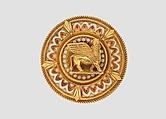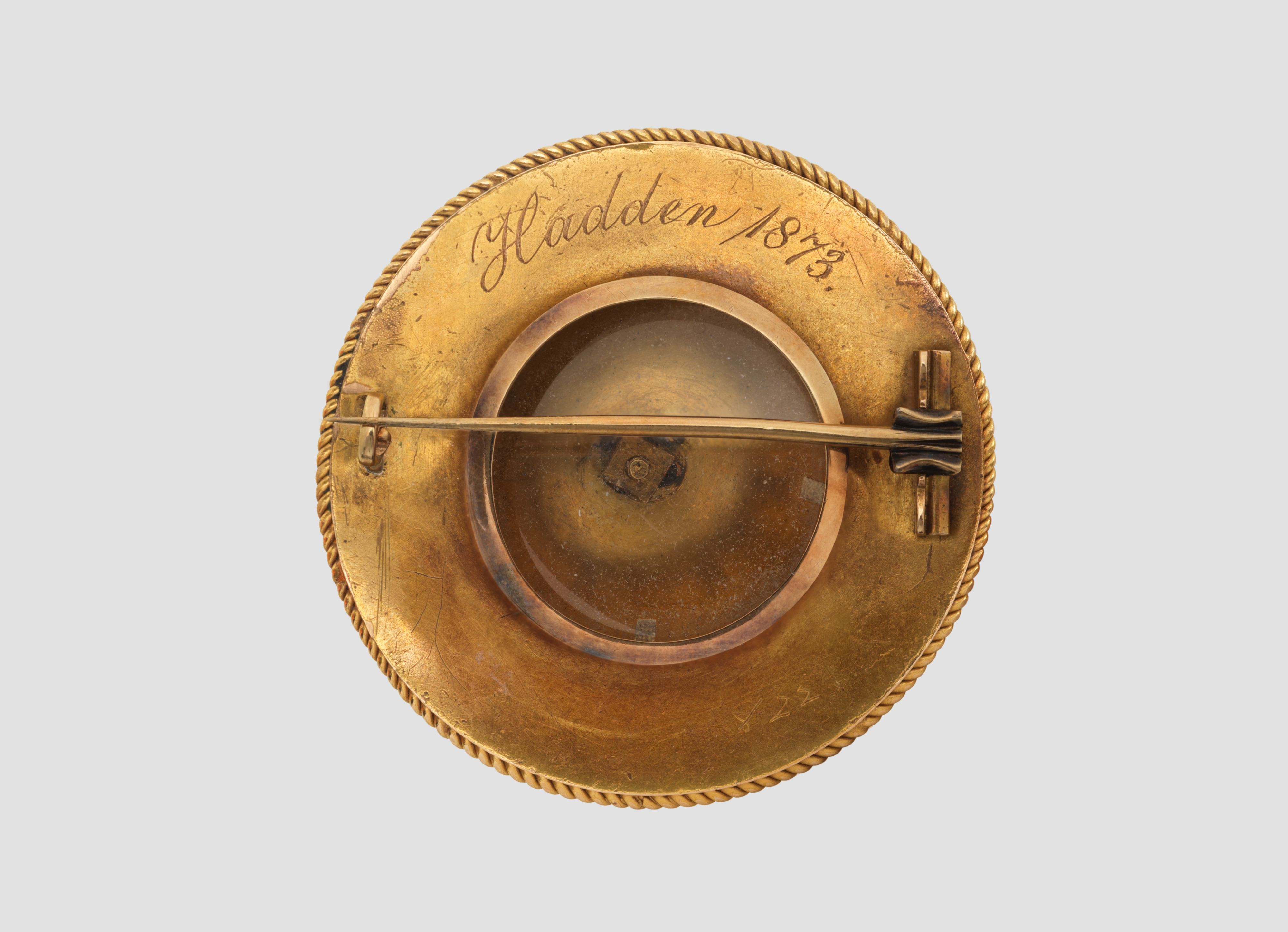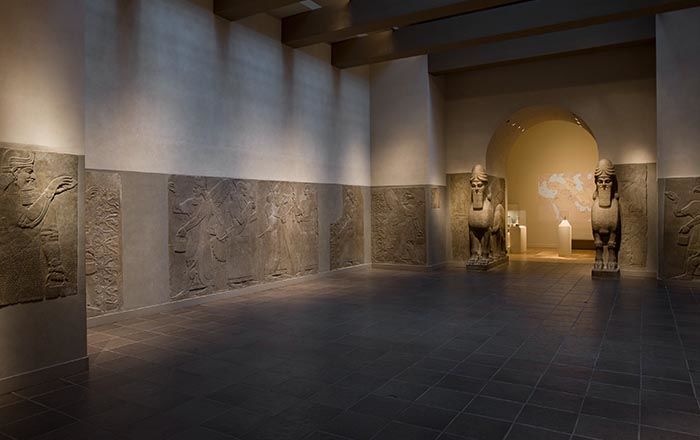Brooch with Assyrian human-headed winged bull
Not on view
Following the excavation of Assyrian palaces in the mid-nineteenth century, ancient Mesopotamian imagery began to be used in European decorative arts, including jewelry and ceramics. Publicity in the form of news coverage and popular books around the excavations, removal of many sculptures from sites in northern Iraq to England and France, and public spectacles such as the reconstructed ‘Nineveh Court’ in the Crystal Palace at Sydenham, London, fostered a fascination with Assyria and Assyrian art among the Victorian public.
This brooch features at its center a human-headed winged bull based on the colossal guardian sculptures found flanking important gateways in the palaces that became the modern icons of the Assyrian excavations and were the motif most commonly used in Assyrian revival jewelry and decorative arts. The reverse, which also contains a now-empty glass compartment, is inscribed "Hadden 1873". Beyond its unusually elaborate enameled decoration, the design bears a close resemblance to other ‘ancient style’ pieces designed by Bond Street jeweler Edwin Streeter (in The Met collection see for example 2023.679). Streeter made and advertised a variety of jewelry based on ancient themes, including ‘Nineveh’ brooches and earrings, and supplied them to other jewelers. His settings drew on classical and Etruscan sources to form a generic ‘ancient’ frame into which specific ancient designs, in this case the Assyrian winged bull, could be set.
This image cannot be enlarged, viewed at full screen, or downloaded.
This artwork is meant to be viewed from right to left. Scroll left to view more.



